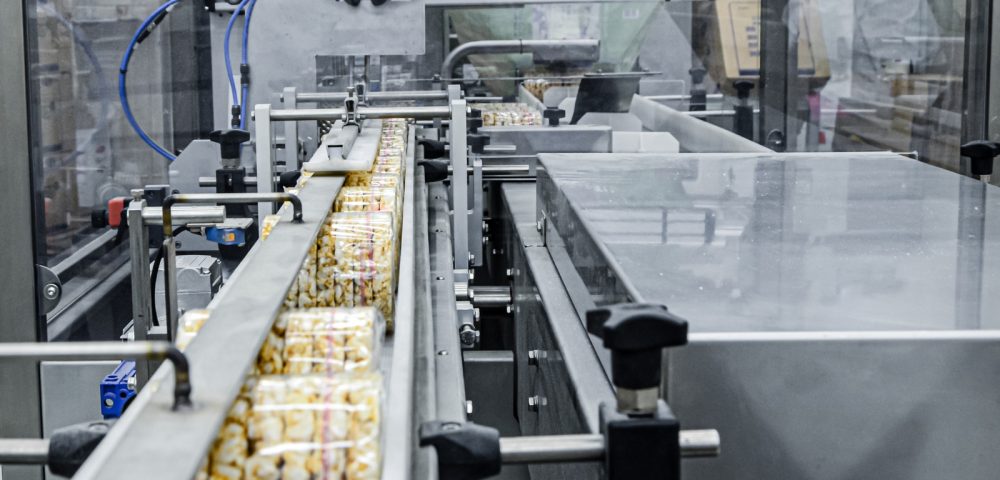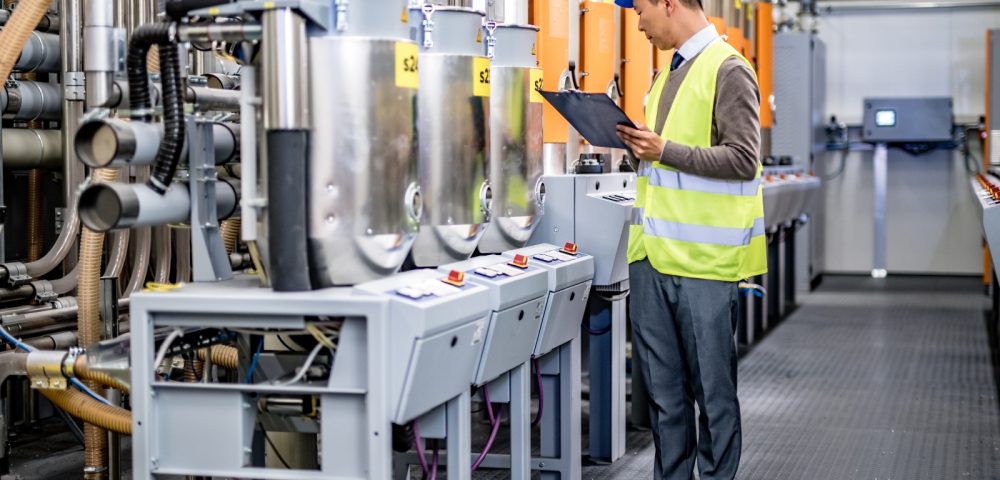From giving life to the soil and extracting its best essence to keep the output on the dining tables, the food and beverage manufacturing industry spreads across a larger territory. Sometimes, as a multi-million-dollar business and sometimes as an essential landscape which backs up the existence of humankind, this particular industry contributes massively to the whole world. This is why the industry needs to be aligned with various management protocols to adhere to the food production standards. Facility management rises as one of the most challenging areas among everything.
This article gives a deep understanding of the challenges the food and beverage manufacturers face in facility management and the tips to overcome them successfully.
We will discover
- What is the Food & Beverage Manufacturing Industry?
- Challenges in Facility Management for Food & Beverage Manufacturing
- Tips for Optimised Facility Management for the Food and Beverage Manufacturing Industry
- Cerexio Making Way for Optimised Facility Management
- Gaining Momentum through Unified Facility Management
- FAQ about the Food and Beverages Manufacturing Industry
What is the Food and Beverage Manufacturing Industry?

Food and beverage manufacturing is a term that refers to the industrial process of preparing, cooking, preserving, and bottling raw agricultural substances and ingredients and turning them into commodities, where they come out after being properly packaged and as consumer-ready food and beverage products.
Challenges in Facility Management for Food and Beverage Manufacturing

Strict Food Safety and Hygiene Compliance –All around the world, food and beverage facilities have to struggle with the pressure they receive to adhere to stringent regulations such as HACCP, FDA, ISO, and local laws. This is where the facility managers always keep an eye on preventing any sort of contamination, ensuring strict cleaning processes, and maintaining the safety of hygienic areas. Even minor errors have the threat of getting ended as recalls, severe fines, and totally ruining consumer confidence.
Equipment Maintenance and Downtime – In this industry, the whole production mechanism relies on refrigeration systems and efficient machinery operating. The dark side of malfunction is that it directly causes the schedules to fall apart and expenses to rise.
Energy Efficiency and Utility Costs – It is quite challenging that the manufacturing facilities require tremendous quantities of water, electricity, and refrigeration. Managers must seek new ways to reduce emissions, waste, and expenses without compromising productivity.
Waste Management and Sustainability – Poor management of food trash, packaging, and industrial byproducts has the potential to completely stop the regular operations. It is indeed difficult to repurpose garbage and demonstrate to customers that it is a sustainable business.
Temperature and Climate Control – There will be no hope for the food quality without proper humidity and temperature. There must be a strategic focus when handling frozen foods, cold storage, and delicate products, etc.
Pest Control and Sanitation – In food manufacturing, pests give nightmares. It is absolutely tough to implement safe control techniques without stopping work, setting up regular inspections, and carrying on with stringent sanitary procedures.
Workforce Health and Safety –Managers have to take the responsibility of preventing and decreasing accidents through safety regulations, offering training, and designing workspaces.
Integration of Technology and Automation – It is a constant pressure that is put on the shoulders of modern plants to use IoT, AI, and automated systems for monitoring and predictive maintenance. Facility managers find it challenging to strike a balance between digital adoption, cost reduction and easy procedures.
Supply Chain and Infrastructure Resilience –This is a realm where every flood, every drought brings a hard time to production. When there are raw material shortages, transportation delays, and worldwide crises, there can be a significant impact on food production.
Tips for Optimised Facility Management for the Food and Beverage Manufacturing Industry

Focusing More on Quality Monitoring and Control
As a facility manager, the worst thing you could do is underestimating the necessity of quality control. Food processing plants work on one rule: That is, producing as many items as possible, and as soon as possible. This is where the importance of exercising caution shines as a strategy. Otherwise, the haste might lead to dangerous blunders.
However, the plant authorities need to focus more on this matter as it may result in a product recall, requiring the need to rectify the situation. The outcome is so obvious! It simply increases operational costs. Implementing the quality control measures is the best way you can keep a safe distance from product recalls and the skyrocketing operational expenses.
Choosing the Ideal Facility Layout
Your facility’s layout has a significant impact on your production levels. Have you noticed this? When you opted for incorrect facility design, it is noticeable that your facility managers have to struggle facing issues like danger of cross-contamination and higher maintenance and operating costs.
The theory clearly indicates that a layout should allow for an efficient flow from raw ingredients to the final product. This way, workers and the management are well aware of the production flow from A to Z, and there will be no room for confusion. As another major fact, there should be an installation of sanitary floor drains and flooring. This will aid in keeping your facility dirt-free.
Executing In-House Audits
One of the most important aspects of facility management is cost management. If you wish to scale back maintenance and operational costs, it is advised to be accountable by conducting regular in-house audits and cost reviews. It is best if you could afford a third-party auditor or auditing firm for this task on a greater level. However, for internal audits, you must create a checklist of the food safety requirements that auditors might look at. Apart from that, it is better to inspect workers, procedures and responsibilities of each department from time to time.
You may observe that many cost inefficiencies stem from a tiny source at first. This is where you must spot the potential errors and take necessary measures to prevent them from escalating to over-the-top damage.
Keeping Equipment in Good Condition
Maintenance and operational costs are somewhat similar to a black hole in the manufacturing world. In order to protect themselves from these costs, manufacturers must purchase high-quality equipment. The higher the quality of your equipment, it will keep working with high efficiency in return. Also, the good condition reduces the chances of downtime.
On the other hand, it is also a part of facility management to ensure the machines are of good quality. This means regular maintenance and performing routine maintenance on all of your equipment will remove the blockages from ensuring that everything is running properly.
Moving Forward with Automation
Food and beverage processing facilities are stuck with numerous responsibilities, and the main reason for this is that the manufacturing process has to go through a variety of phases. It is true that certain stages can be completed manually by employees. Yet, introducing automation and robotics can drastically improve productivity.
Sorting, preparing, and packaging products are among the many other time-consuming tasks that automated technology gives a boost to their procedures, exceeding the capacity of an ordinary person. This is how it clears the path for reduced operational expenses and decreases in errors, saving you millions of dollars at the end of each financial year.
Cerexio Making Way for Optimised Facility Management

Cerexio clears out the blockages for the food and beverage manufacturing companies to reach the optimal levels of facility management within a short time. With our Industry 4.0 powered Manufacturing Execution System, from everything from pre-production workflow to post-production, warehousing, and logistics are optimised under one space. If facility management is your concern, hold hands with Cerexio MES for the best results.
Gaining Momentum through Unified Facility Management

You no longer should worry about the disconnected aspects of your manufacturing facility, as new-age tools and strategies support you in achieving momentum with their capabilities to enhance visibility and centralise management. It is no more scattered facets; it is one unified operational oversight.
FAQ about the Food and Beverages Manufacturing Industry
The food and beverage industry revolves around processing facilities such as bakeries, dairies, seafood, grain milling, preserving fruits and vegetables and more.
This is a place where there must be a massive focus on proper machine care and regular maintenance of tools and equipment within food processing facilities. The industry must align with the maintenance standards of the FDA, laws for cleaning and sanitation, proper documentation, and the use of equipment tags, etc.
The preventive maintenance in this particular industry is about taking necessary actions and measures before a breakdown occurs. When the technology points out the potential errors, preventive maintenance offers insights into what needs to be done in order to prevent them.
